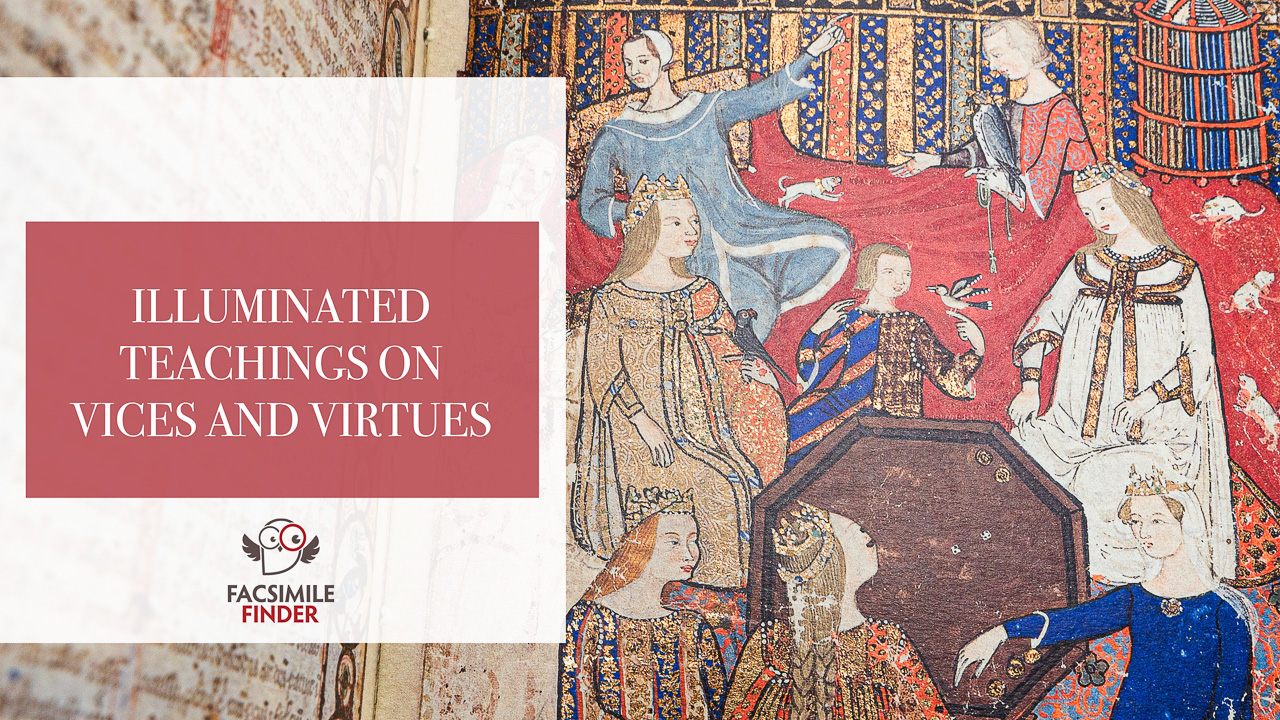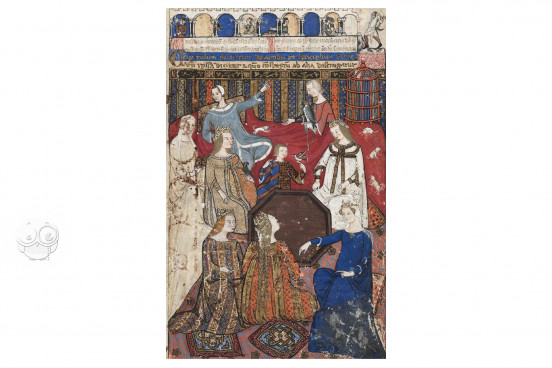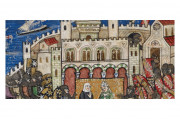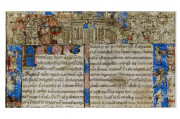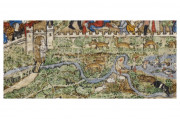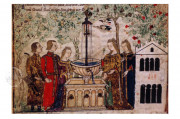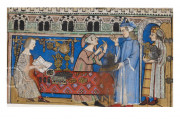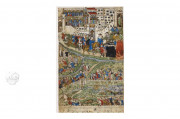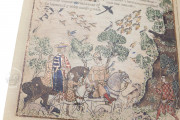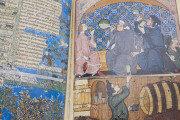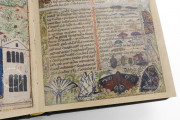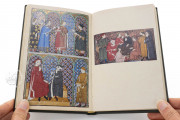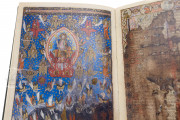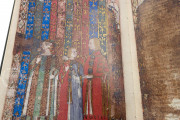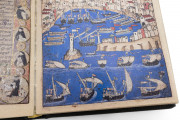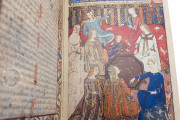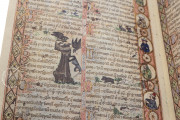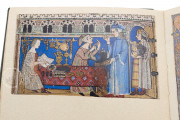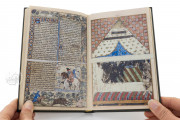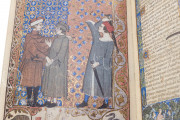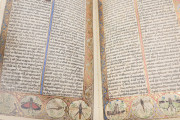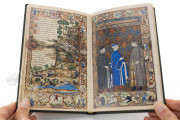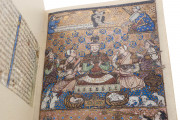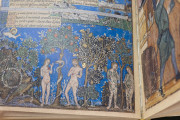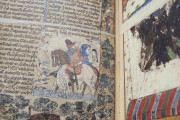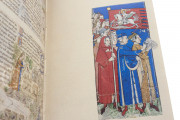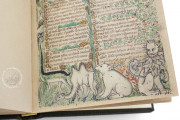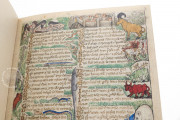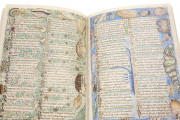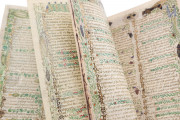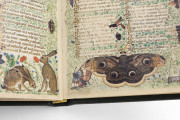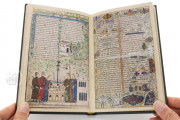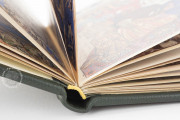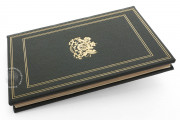The Cocharelli Codex, named for the author of its principal text, comprises the surviving leaves of an illuminated manuscript of uniquely preserved texts on Christian vices and virtues and the life of Corrado Doria. The manuscript was probably made in Genoa around 1330, not long after a grandson of Pellegrino Cocharelli wrote its treatise on the seven capital sins. The surviving illumination boasts twenty-six miniatures, including detailed views of recent events in Genoese and Mediterranean history and portraits of members of the Cocharelli family.
The twenty-seven "leaves" of the Cocharelli Codex are actually cuttings. Most are nearly complete leaves with only blank margins cut away, and three are trimmed to the edges of miniatures occupying less than a full page. Twenty of the cuttings come from the text on the vices, just one from the treatise on the virtues, and six from poetic texts focused on virtue.
Recent History Pictured
The author, whose exact identity is unknown, states that he composed the text for the edification of his sons, including one Johannis. He also reports that many of the stories he relates—principally examples to illustrate vices—were told to him by his grandfather Pellegrino, who was a citizen of Acre in the Holy Land before moving the family to Genoa.
Full-page miniatures illustrate the fall of Tripoli in 1289 and Acre in 1291 to Mamluk warriors, two decisive defeats for the Western Europeans occupying lands in the Middle East. Both illustrate the vice of Envy, which—the author tells us—leads to the ruin of cities and kingdoms. The cities under siege are depicted in bird's-eye view, with the harbors rendered in brilliant blue. The details closely follow the accounts of the events as related by the author's grandfather (Add. 27695, fol. 5r, and Bargello, recto).
A full-page miniature of the execution in Paris of Jacques de Molay (d. 1314), the last Grand Master of the military order of the Templars, illustrates the vice of Avarice. Philip IV (1268-1314), King of France, is pictured below suffering a stroke during a boar hunt (Add. 27695, fol. 6v).
Naturalia in the Borders
The manuscript's poetic text—mostly an epic telling of the life and death of Corredo Doria, a Genoese admiral in the service of Frederick III (1272-1337), King of Sicily—boasts painted borders inhabited by zoological specimens seemingly unrelated to the text. The animals depicted include real and fantastic quadrupeds, marine creatures, snails, and insects (Add. 28841, fols. 2-6).
Titles in Gold and Silver
The manuscript's text is written in Gothic Textualis in two columns. There are numerous gold initial letters with pen flourishing, and the titles are written in gold and silver on colored bands. To judge from the surviving leaves, every page boasted painted border decoration.
A Remarkable Survival
The surviving leaves of the Cocharelli Codex are divided among three collections, with the lion's share (all but two leaves) in the British Library. Those leaves—acquired in 1867, 1871, 1934, and 1968 by the British Museum—came from four different sources, including the collections of Nicolas Yemeniz (1783-1871) and Seymour Stocker Kirkup (1788-1880). The manuscripts of the British Museum library were transferred to the British Library upon its foundation in 1973.
A single leaf once in the collection of Edwin and Caroline Czeczkowiczka was acquired in 1953 by the Cleveland Museum of Art, and Louis-Claude Carrand (1827-1888) bequeathed a leaf to the Museo del Bargello.
We have 1 facsimile edition of the manuscript "Cocharelli Codex": The Cocharelli Codex facsimile edition, published by Mueller & Schindler, 2025
Request Info / Price
